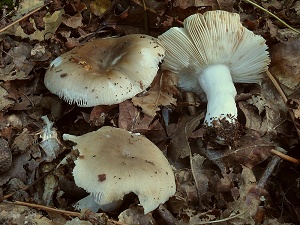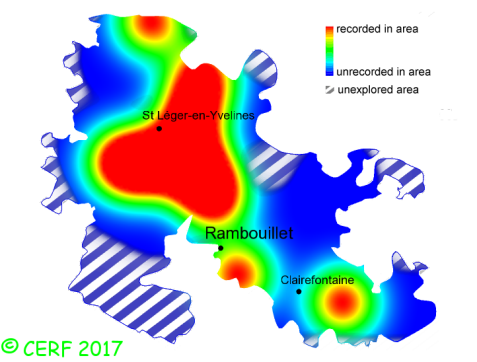| Russula praetervisa Sarnari |
|
|
|
|
|
|
The cap is yellow-brown, cinnamon to buff, then ochraceous, convex then flat then depressed ; its margin is strongly striate-furrowed. The cap surface is smooth, viscid in wet weather. The stem is white, hollow when mature, stained with brown in wounds or washed with bright red from the base up, without ring. The flesh is white, unchanging; its taste is mild to unpleasant, sometimes slightly hot; the odour is unpleasant, rubbery or of fish oil and fruity; its texture is grainy (breaking like a chalk stick). The gills are white then cream, spotted with rust, adnate to adnexed, thin . The spore print is whitish. This species is mycorrhizal. It grows on the ground, more frequently in broad-leaved woods, rarely with conifers, alongside paths on sandy soils, on a rather acid soil, with beech and hornbeam, sometimes spruce and pines. The fruiting period takes place from June to November.
Chemical tests : flesh becoming salmon pink when in contact with iron sulphate; faint purple reaction of cap cystidia to sulpho-vanillin. Distinctive features : brown cap, soon discolouring to ochre, with a striate margin; unpleasant smell, of rubber or fetid; white then cream gills, dotted with rusty spots; mild to unpleasant taste; white stem, washed with red at its base Russula praetervisa is quite rare and scattered in the forest of Rambouillet, and is occasional, more generally speaking . | ||
|
page updated on 14/01/18

